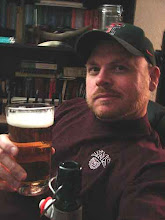 In this collection of essays, Gregory Schopen strives to demarcate the “excessive focus upon the rarefied categories" [1, pg. ix] of scholastic monastic elites and the ‘popular’ or actual practices of ancient Buddhist monks. In this attempt, Schopen demonstrates the privileging of texts in the study of ancient Buddhism by western scholars over prevalent archaeological and epigraphical evidence pertinent to this field of study. He begins by exposing the ‘protestant presuppositions’ in the universal importance of the text in both study and in actual practice. He quickly contrasts the established theory, based on textual evidence, that monks and nuns did not possess property with the archaeological and epigraphical evidence to the contrary. He concludes that embedded “in apparently neutral archaeological and historical method might very well be a decidedly nonneutral [sic] and narrowly limited Protestant assumption as to where religion is actually located" [1, pg. 130]. This illumination may indicate an inherited tendency to disallow actual practice a meaningful place in the definition of religion and the devaluation of any non-textual sources that express religion.
In this collection of essays, Gregory Schopen strives to demarcate the “excessive focus upon the rarefied categories" [1, pg. ix] of scholastic monastic elites and the ‘popular’ or actual practices of ancient Buddhist monks. In this attempt, Schopen demonstrates the privileging of texts in the study of ancient Buddhism by western scholars over prevalent archaeological and epigraphical evidence pertinent to this field of study. He begins by exposing the ‘protestant presuppositions’ in the universal importance of the text in both study and in actual practice. He quickly contrasts the established theory, based on textual evidence, that monks and nuns did not possess property with the archaeological and epigraphical evidence to the contrary. He concludes that embedded “in apparently neutral archaeological and historical method might very well be a decidedly nonneutral [sic] and narrowly limited Protestant assumption as to where religion is actually located" [1, pg. 130]. This illumination may indicate an inherited tendency to disallow actual practice a meaningful place in the definition of religion and the devaluation of any non-textual sources that express religion. This method of study is indicative of Schopen’s scholasticism in these essays. He continues to juxtapose literary tradition with fresh philological evidence and cursory colonial archaeology postulation with in depth epigraphical analysis. He posits that the doctrine of merit associated with later inscriptions is far older than a Mahayana idea. He uncovers the far greater roles of women in ancient Buddhist communities and in the practice of the image cult. He proposes that monks practiced and founded the relic cult in which the living presence of the Buddha is worshiped contrary to the position that laymen started this practice. He explores the funeral rites of Buddhist monasteries by monks for fellow monks, including the division of property with the brahmanical preoccupation with proper ritual treatment of the dead to avoid social censure as well as affronting the deceased. In all of these discoveries lie the undercurrents of exposing literary privilege and the promotion of archaeological and epigraphical evidence in the study and definition of religion.
Three points I found most striking in this collection of essays. First, I was impressed by his argument demonstrating the ‘protestant presuppositions’ of the privilege of literary text over other evidence. Although I would contend archaeological evidence can be obscure and just as open to interpretation, I had to recognize my own proclivities in this direction. Second, I agree that in the history of religions, more emphasis should be allowed for “religious constructions and architectures, inscriptions, and art historical remains" [1, pg. 114]. Third, I had to admit that I shared the common view of the Buddha as “a kind of sweetly reasonable Victorian Gentleman" [1, pg. 258] when I began reading this collection. After reading these essays I have a different idea of how the ancient Indian Buddhists lived and hopefully a closer understanding of their view of the Buddha.
-Safari Bob
[1] Schopen, G. (1997). Bones, Stones, and Buddhist Monks. Honolulu: University of Hawaii Press. ISBN: 0-8248-1870-9






No comments:
Post a Comment